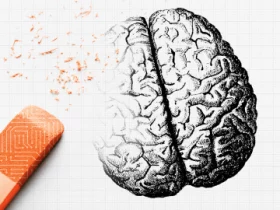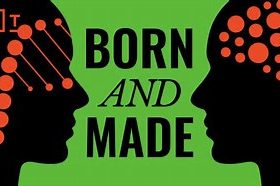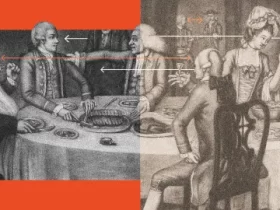Strategic thinking has always been a critical skill at the top: Leaders must be able to recognize emerging challenges and opportunities, establish the right priorities, and critically mobilize their people to adapt to the many changes that are going on.
Michael Watkins, author of The 6 Disciplines of Strategic Thinking, has defined six key mental disciplines that underlie our ability to recognize, prioritize, and mobilize.
Want to become the smartest person in the room and a better leader at work? Implement these six core skills to master your mind.
MICHAEL WATKINS: I’m often asked, are great strategic thinkers born or are they made? And my answer is always yes. It’s like so many important and valuable human capabilities, a mixture of nature and nurture and experience. You’re not going to become a world-class marathoner if you don’t have the right physiology, the right muscles, the right lungs, but you still need to train very hard, and it’s very similar with strategic thinking. You certainly are born with an endowment. Some people are naturally better that it than others, but there’s so much you can do to develop yourself. And I always tell people, don’t worry about the endowment. Focus on the improvement because my research shows definitively that you can get much better at being an effective strategic thinker.
I’m Michael Watkins. I’m a professor of leadership and organizational change at the IMD Business School in Lausanne, Switzerland. My book is “The Six Disciplines of Strategic Thinking.” Strategic thinking has always been a critical skill at the top. Leaders must be able to recognize emerging challenges and opportunities, establish the right priorities to focus their organizations, and critically mobilize their people to do what’s necessary to adapt to the many changes that are going on today.
In the research I did on strategic thinking, I identified six key mental disciplines that underlie your ability to recognize, prioritize, and mobilize. Pattern recognition is a foundational discipline of strategic thinking. The ability to find the signal, the important information in what can be a sea of noise. Not just absorbing what’s happening, but thinking about why, thinking about connection. When grandmasters look at a chessboard, they don’t just see pieces. They don’t just see the layout of the board. They see the most important patterns that exist in that configuration. They see opportunity. They see concentrations of power. They see potential vulnerabilities.
At the heart of your ability as a leader to navigate complexity is the discipline of systems analysis. It’s absolutely essential, of course, that systems models capture the most important features and dynamics of the system that you’re talking about. But given the very, very high levels of complexity today, no human being and indeed, so far, no computer is able to flawlessly model the entire set of variables and interactions that constitute a complicated system. One example I use is climate, where today we have very good models of climate, but they’re absolutely simplifications of reality. They model large chunks of the atmosphere, for example, in ways that are really kind of, crude almost. But they do capture the most important features of the overall climate system in a way that lets you make good predictions.
As you focus on the discipline of mental agility, it’s important to understand this idea of level shifting. There’s a CEO I work with who describes this as cloud-to-ground thinking. The ability to move from a high-level perspective, to be in the clouds, to see the big picture of what’s going on, but also to drill down into the detail when necessary. The great strategic thinkers I know are able to move between those levels of analysis and do so fluidly and also intentionally.
Structured problem-solving is what you do with teams to help them engage in rigorous processes of framing and solving the most consequential problems that the organization faces. The structured part is really essential because it ensures that you’re doing a good job of truly solving the right problem, that’s the framing part, and then generating and testing the right options so that you end up with a robust solution. There can be many stakeholders involved that have an interest in what happens. And so it’s essential, therefore, to establish a process that moves people through that, you know, framing and solving of problems such that at the end of the process, they’re in alignment, if not enthusiastic, about what happens going forward.
At its core, visioning is about identifying the future to which you are trying to move your organization, a compelling portrait of where we are going to go together and why we should feel excited about getting there. There’s a core tension you need to manage between ambition and achievability. Err too far on the side of ambition. You’re creating something that’s unrealistic people won’t feel like they can really accomplish, and ultimately does exactly what you’re trying not to do, which is to demotivate people. Err too far on the side of achievability, it’s too easy, it’s not ambitious enough, it’s not exciting for people, It doesn’t really fundamentally motivate them.
And finally, politics is an essential part of every human organization, and there’s simply no avoiding it. There are certain tactics that you can use that will help you influence people. A classic example of this is what’s known as sequencing strategy. This is really about being thoughtful about the order in which you communicate with people and how you engage in order to build momentum in the directions you want the organization to go. I’m going to talk first to Christian, and then I’m going to talk to Stephanie. And if I have Christian and Stephanie on board, then getting Robert on board is going to be easier. And I need to be careful in the process not to overplay things in a way that causes Trudy to feel threatened by what I’m trying to do and start to do things to mobilize potential opposition. Just think about this process of moving people step by step to a place that they wouldn’t have gone in a single leap.
The people making the decisions about leaders’ futures are more and more weighting the importance of strategic thinking capability in their decisions about whether you will advance or not. And this just amplifies the importance of focusing as much as possible on building your strategic thinking capability. It really is the fast track to the top.




























Leave a Reply